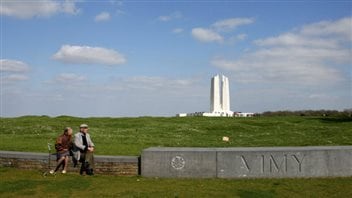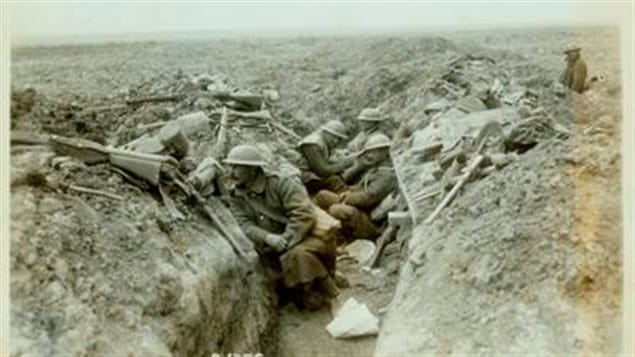A Canadian researcher is hoping to locate the bodies of some 44 Canadian soldiers killed during the battle at Vimy in the First World War, and he says after 97 years, there’s an urgency to the task.

Norm Christie is a WWI expert, a well known military/historical author, lecturer, battlefield tour guide and former member of the Commonwealth War Graves Commission.
He says the soldiers of the 16th Battalion -3rd Brigade, known as the Canadian Scottish Regiment (Princess Mary’s) were killed during the battle at Vimy Ridge. In April 1917, the 650 members managed to break through the heavily defended German front lines. Some 100 Canadians were killed in the effort. “That’s a success, by First World War standards”, says Christie.
Of those 44 were buried in a giant bomb crater for convenience with the intention to have them relocated to a proper cemetery later, but somehow that didn’t happen. The nearby 9 Elms Cemetery has their grave markers, but not the bodies. Meanwhhile, the location of the makeshift crater site “CA-40” was lost.
After searching records and period maps, Christie thinks he knows the location, which is currently under a potato field at Neuville-St-Vaast.. However the nearby city of Arras has expropriated the farmland and the area is slated for development into an industrial park, and Christie says it’s time to find the soldiers remains and give them a proper burial.
He says the men, mostly from Manitoba, if found, would be identified through DNA testing of current descendants.
Locating the remains would be done through deep penetrating ground radar. Some previous efforts had been made, but that radar did not go deep enough. Christie says the bodies are likely six metres deep.
He notes the French government remains cooperative but notes because of the plans to develop the area into an industrial park, time is becoming important.
He also points out that digging anywhere in the area around the battle zone is still very dangerous as it’s still riddled with unexploded shells.







For reasons beyond our control, and for an undetermined period of time, our comment section is now closed. However, our social networks remain open to your contributions.